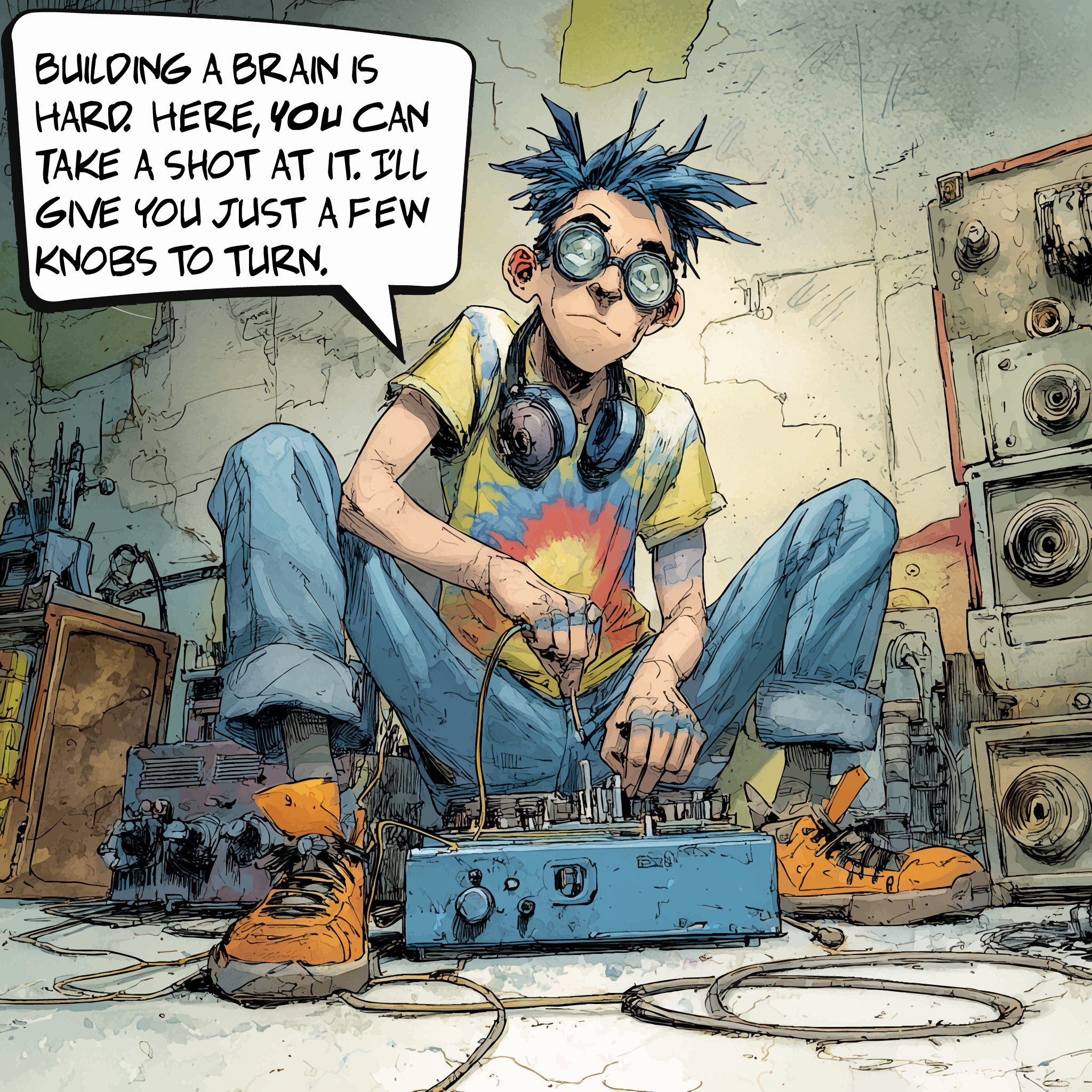
First Principles: Criticality
Imagine building a brain from scratch... you have billions of knobs to turn --- one for everything that controls how neurons work, individually and as a group. Your goal is to make the smartest machine possible. But the sheer number of possible combinations is effectively infinite --- you could spend eternity searching. You'll quickly find a serious problem (the heart of the matter, really): most settings are dead ends. They either lead to boring, rigid dynamics that can't learn anything new, or explosive, chaotic activity that destroys any meaningful computation. Every once in a while, you'd stumble upon a boundary in this vast parameter space where the behavior suddenly jumps from stable to explosive. This is a tipping point called criticality. Here, something magical happens: your brain exhibits scale-invariant dynamics: it generates patterns of all shapes and sizes that last from milliseconds to minutes. Your brain becomes marginally stable, making it exquisitely sensitive to inputs (like other thoughts and the outside world) while remaining controllable. It's like a fighter jet (marginally stable, easy to spin and flip) versus a 747 (pure stability, very hard to turn around). At criticality, your brain is maximally tunable, so small knob twists can reconfigure the entire system for new tasks. And perhaps most importantly, it develops a generative capacity —the ability to create complex, internally-driven dynamics that aren't just reflections of external stimuli. Unless we've been wrong about the brain this whole time, that's what your internal world is. It's a reasonable hypothesis to suggest that this tipping point is the final target of all the set-points throughout the brain. Because if you want a brain that can learn anything, adapt to anything, and generate the rich internal dynamics necessary for behavior and healthy cognition, criticality starts to sound like it might not just be optimal, but almost inevitable. Our data and many other groups' suggest that evolution, development, and homeostasis all converge on this mathematical principle. Because it's the only place in parameter space where flexible, general-purpose computation is actually possible.

How to Explore Criticality
Goal: Manipulate network parameters and see if you can get rich activity that spans multiple spatial and temporal scales. Just as your cognition is defined by acute, rapid calculations as well as long lasting, multi-modal processes, an effective model of the brain should sit near some "sweet spot" where flurries of neuronal activity (avalanches) are diverse in size/duration but don't explode into seizure-like activity.
Getting Started:
- Click anywhere in the simulation to seed a set of neural avalanches.
- Adjust excitatory drive to control how easily neurons activate each other.
- Balance the network with inhibition to prevent runaway activity.
What to Look For:
- Power Law Distribution: A straight line in the log-log plot is a signature of critical dynamics.
- Diverse Avalanche Sizes: Small, medium, and large cascades should all occur
- System Phase Indicator: Try to keep the marker in the "Critical" zone
- Complexity Score: Higher scores indicate more interesting, variable dynamics
Visual Cues: Cyan = active excitatory neurons, Red = active inhibitory neurons, Dark colors = refractory (temporarily inactive)

